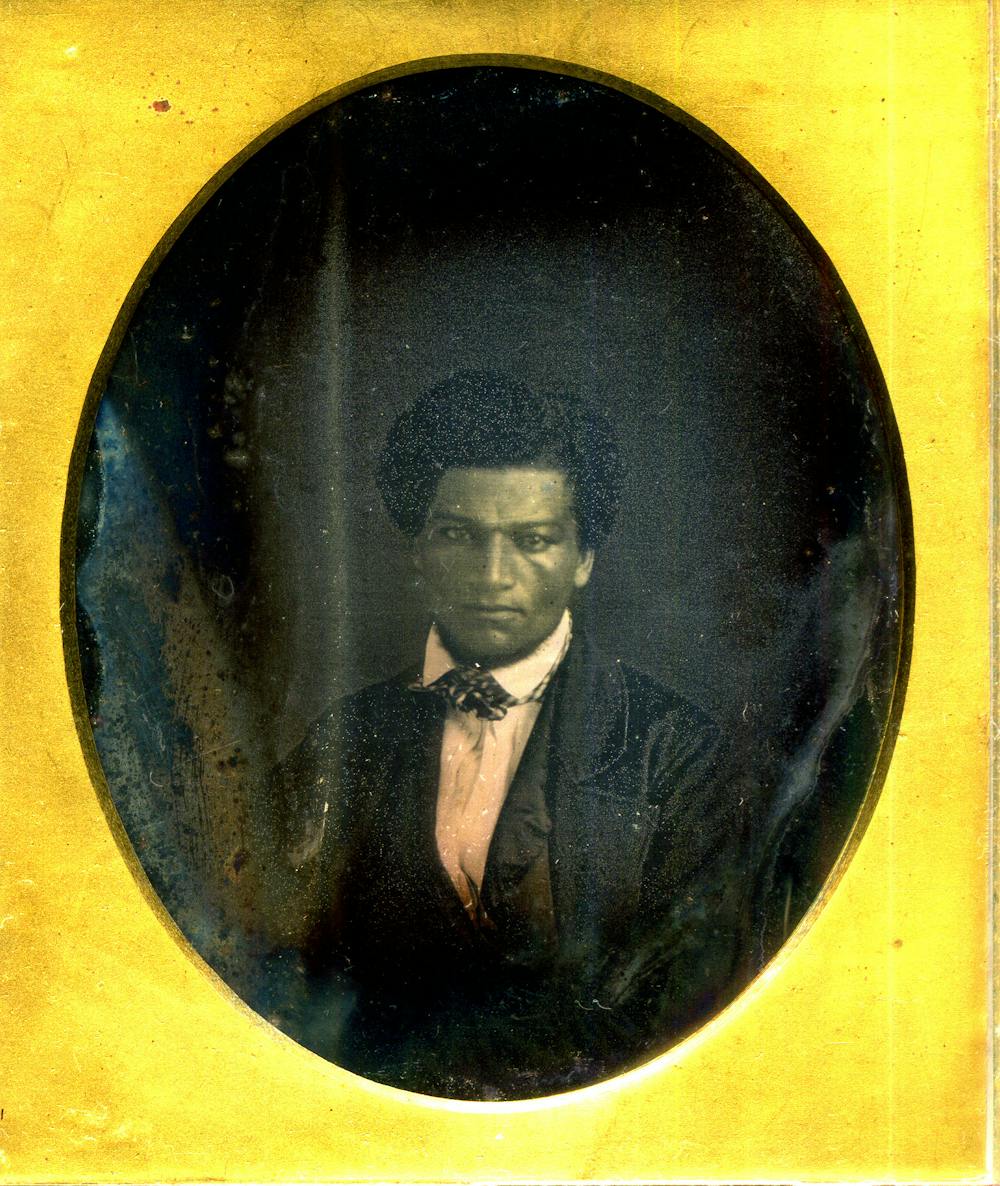Frederick Douglass, one of the most influential American abolitionists, never knew his own birthday. Now, in the new National Portrait Gallery exhibit dedicated to Douglass, a ledger recording his February 1818 birth is on display.
The National Portrait Gallery is now home to a temporary exhibit, “One Life: Frederick Douglass,” which showcases artifacts and photographs from the famed abolitionist, editor, orator and activist’s life. He was not only a leader in the abolitionist movement but also in the women’s suffrage movement. The exhibit, which opened in celebration of this year’s Juneteenth, highlights Douglass’ path through life and statesmanship.
According to the Smithsonian, the exhibit showcases more than 35 items, which include Douglass’ daguerreotype — one of the earliest forms of photography — and his writings, and highlights other civil rights advocates, such as abolitionist and spy Harriet Tubman and women’s rights activist and abolitionist Sojourner Truth.
Curator John Stauffer, a professor of English and African and African American Studies at Harvard University, said Douglass is important, not only due to his abolitionist leadership but because of his creative endeavors as well.
“Douglass is one of the most influential and significant figures in American history, especially in the 19th century,” Stauffer said. “He’s the most photographed American in the 19th century. There were more separate photos of Douglass than anyone else.”
He added that Douglass is now getting the recognition he always deserved.
“Douglass is finally becoming well known, but a lot of people have not still read Douglass,” Stauffer said. “His writings are … some of the best nonfiction writings, both in terms of its beauty, but also in terms of his brilliant critique of the United States.”
Douglass wrote three autobiographies, including “Narrative of the Life of Frederick Douglass, an American Slave” in 1845, which is featured in the exhibit.
Douglass was born Frederick Augustus Washington Bailey, son of Harriet Bailey. Both were enslaved in Maryland on a plantation owned by Edward Lloyd, according to Frederick Douglass Heritage. He broke out of bondage in 1838, according to the exhibit, where he also changed his last name to Douglass. He then became a major leader of the abolitionist movement.
Ann Shumard, the senior curator of photographs at the National Portrait Gallery, explained that through this exhibit, she hopes that students start to understand new ways to tell the story of an individual’s life.
“I think what I like about the Douglass exhibition is the fact that it brings together so many different kinds of objects to weave together Douglass’ story,” Shumard said. “And I think that that makes it more interesting, it gives it more sort of texture and nuance that you have a piece of sheet music and then you have the broadside that Douglass authored, recruiting African Americans to fight in the Civil War.”
She added that Douglass is “really an evergreen figure,” due to his impact on America.
Douglass’ influence has lasted centuries, as highlighted in the section of the exhibit titled “Afterlife.” Here, other civil rights leaders, such as poet Langston Hughes, who wrote the poem “Frederick Douglass: 1817-1895”, as well as intellectual and activist W.E.B. Du Bois, are displayed, revealing that Douglass’ inspiration was felt long after his death in 1895.
Shumard also discussed the importance of one particular item in the exhibit — the Douglass daguerreotype, a silverized plate that records an image. She told The Eagle that it “is basically a mirror image of him that has been permanently captured. So it's just as though he's looking back at you.”
Stauffer noted that this exhibit is important especially to compare the past to the present political and social climate by discussing how the U.S. is “still plagued with racism and with a lot of the same issues that existed in Douglass, time.” Stauffer specifically pointed to former President Donald Trump who “tried to essentially overthrow democracy;” the very democracy that Douglass fought to attain.
“[Douglass] understood democracy and the problem of achieving democracy and of equal rights for all people in ways that very few others did,” Stuaffer said.
The “One Life” exhibit will be available until April 21, 2024, on the second floor of the Gallery.
This article was edited by Abigail Hatting, Zoe Bell, Jordan Young and Abigail Pritchard. Copy editing done by Isabelle Kravis and Luna Jinks.





